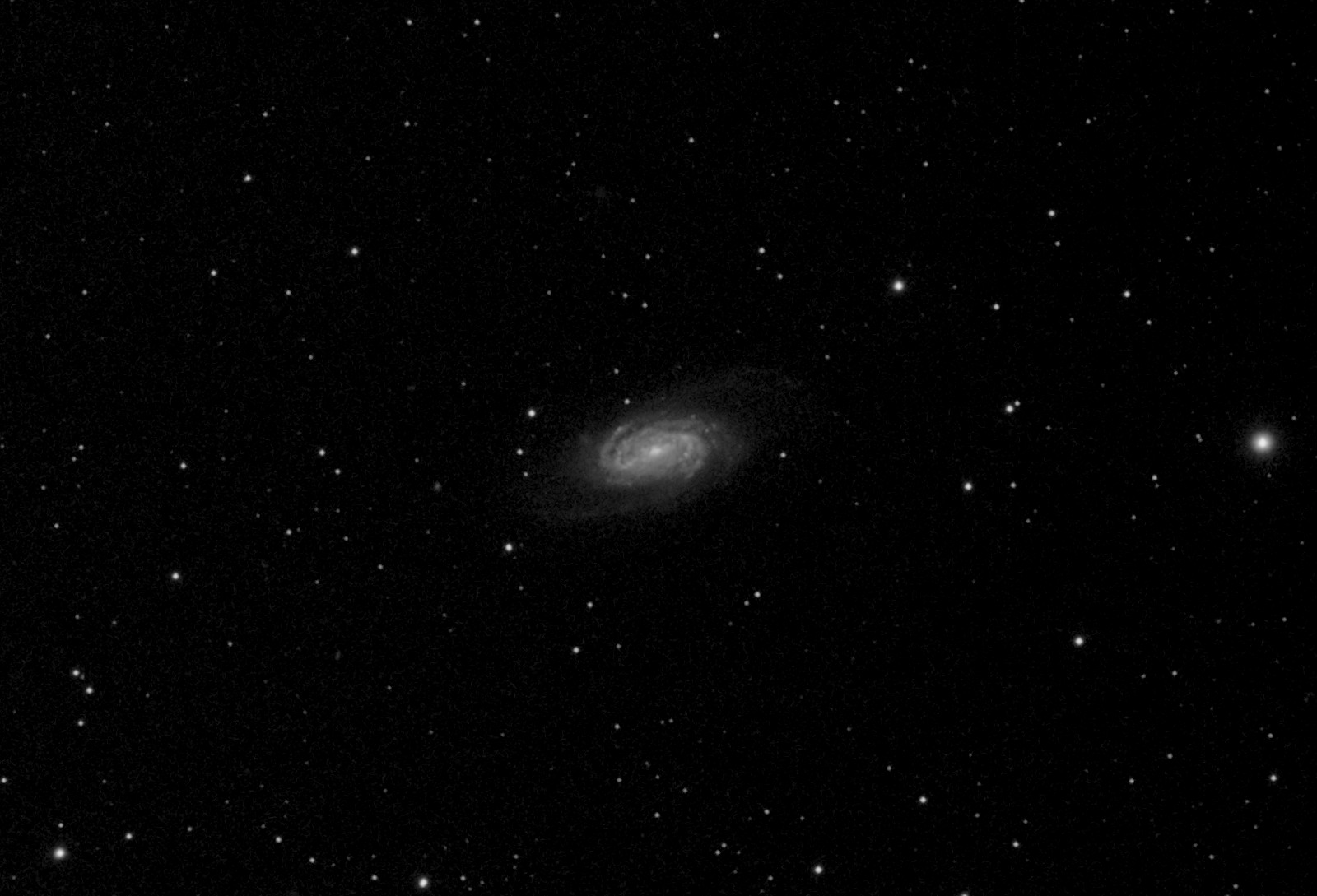
I collected all of the sub-images during bright moonlight. Maybe in a week or two, I will post a better rendition. This picture has just a hint of whispy spiral arms at the edges, which I might be able to capture.

Usually, I photograph M81 and M82 together, but here I concentrated on M81. This image is a composite taken through separate RGB filters, and took a long time to process — a deep dive through some of the complexities of PixInsight. I learned a lot.
It is a beautiful galaxy, well worth the trouble.

I managed to spend more time photographing NGC4248 and friends. NGC4248 is the tiny galaxy dead center; M106 is the larger galaxy above and left. I posted the same view a couple of weeks ago — that post integrates a fewer number of exposures. There is also an annotated version in that post that identifies several galaxies in the field.
Increasing the number of exposures will improve the clarity of the image, but there are limits. The rule is that clarity improves as the square root of the number of sub-exposures — 16 five-minute exposures combined should improve the clarity by about a factor of four over a single five-minute exposure. The above picture had about 40 five-minute sub-exposures; 80 exposures would show some improvement, though maybe not easily noticeable.

This is about as good as it’s going to get — almost 7 hours total exposure in this image, but if I count the frames in the “reject” pile, it represents 15 hours of actual telescope time.
Most rejects are because of wind. My telescope sits on a rickety balcony — no matter how cat-like my steps, I cannot walk on the balcony while the camera is going. Even with remote operation, where I’m sitting inside with a tablet controlling everything, a moderate wind is enough to give me peanuts instead of points:

I took a quick image of NGC3718, exploring the possibility of deeper photos. It looks like this:

Better pictures exist. I’m interested in what I can produce with a good set of sub-exposures and better conditions (image taken two nights ago; near full-moon whiteout).
Just left of NGC3718 is a fascinating group of galaxies. They are dead center in the crop below:

This is HCG 56, from the Hickson catalog of compact galaxy groups (HCG). I am confident that with clear dark skies and calm winds a cleaner picture is attainable.

A closer crop of the image from yesterday. There are several small galaxies, and some small smudges that I think are galaxies that are not in the NGC catalog. Events of the day make it worth my time to scan noisy pictures for meaning.
The universe is so large, and we are so small.

This is just a sketch with only 8 sub exposures. It would look much better with 5 times as many, even though it would still be tiny.
There are four other galaxies in this image, all in the lower right quadrant, NGC898, NGC906, NGC909, and NGC910. Exercise for the viewer. 🙂